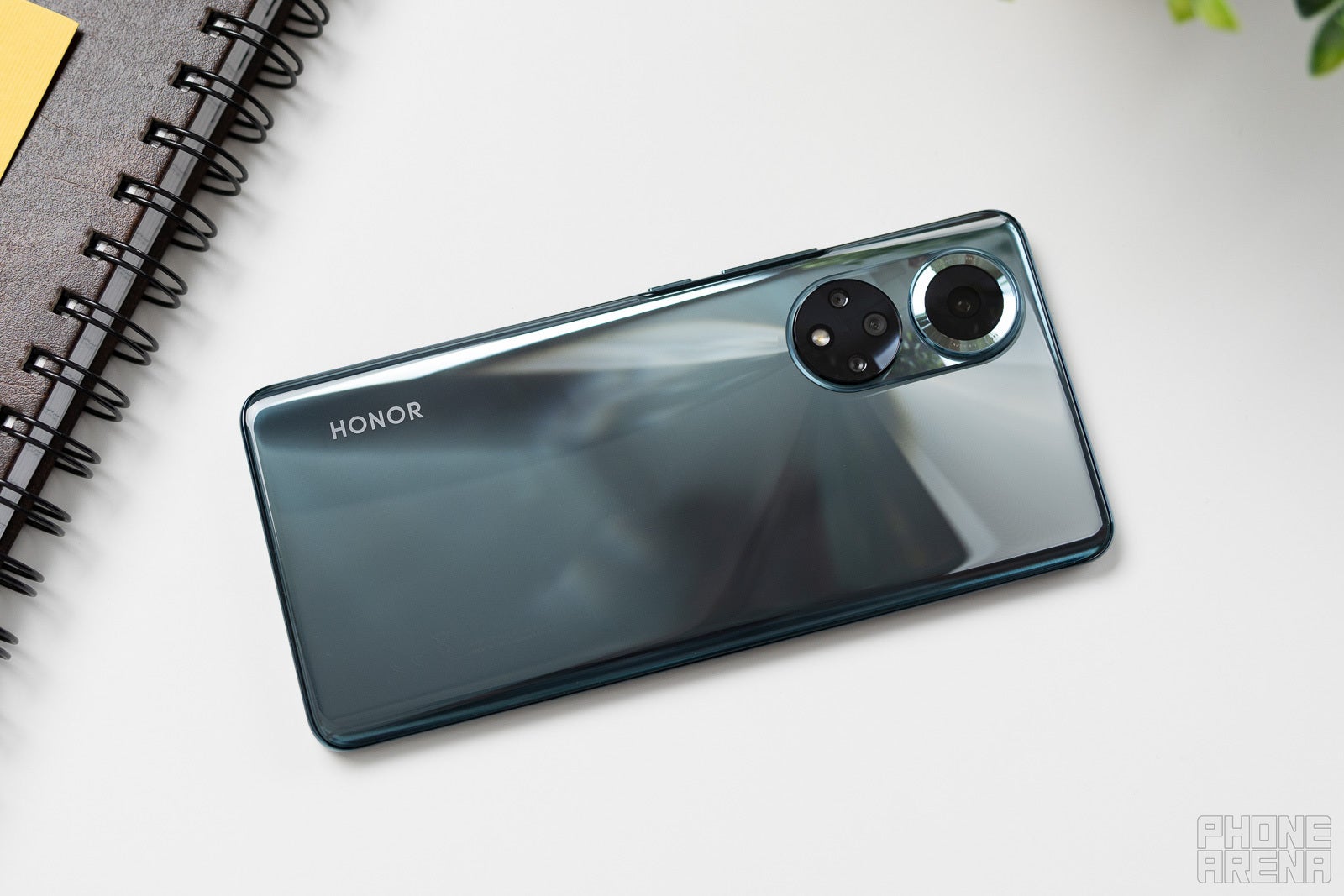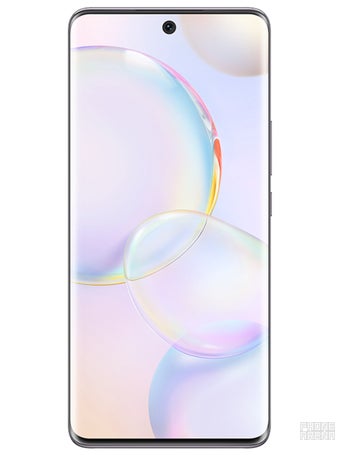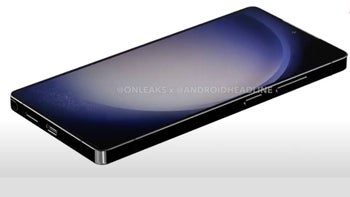Honor 50 Review: under the radar

The Honor 50 is a strange bird. Even if we try and disregard all the Huawei connections and the fact that this phone looks almost identical to the Huawei Nova 9, the Honor 50 leaves us with mixed feelings.
The design is pretty classy, and the 120Hz OLED screen is a real gem but on the other hand, the camera system is not on par with the competition. The main 108MP snapper is decent enough but other gimmicky lenses like the 2MP macro and the dedicated bokeh just don’t cut it.
The phone works fast and smooth, even though it doesn’t pack flagship-grade silicon. The lack of a microSD card is a bummer, especially when the storage options start at 128GB. There’s a 66W fast-charging brick in the retail box and it does a great job of pumping up power in the 4,300mAh battery but there’s no wireless charging.
At the end of the day, the Honor 50 is a midranger and a pretty good one at that. The base model starts at 529 euro for the 6/128GB version but at this price point the competition is pretty stiff - there are a bunch of good Xiaomi phones, and let’s not forget the Galaxy A-series.
The design is pretty classy, and the 120Hz OLED screen is a real gem but on the other hand, the camera system is not on par with the competition. The main 108MP snapper is decent enough but other gimmicky lenses like the 2MP macro and the dedicated bokeh just don’t cut it.
At the end of the day, the Honor 50 is a midranger and a pretty good one at that. The base model starts at 529 euro for the 6/128GB version but at this price point the competition is pretty stiff - there are a bunch of good Xiaomi phones, and let’s not forget the Galaxy A-series.
Design
The Honor 50 design is reminiscent of past times when curved fronts and backs were all the rage. It’s still an eye-catching design, although I find curved screens frustrating to use without a case, as you constantly touch the screen with your palm while holding the phone.
There are only two buttons placed on the right side of the frame, which is plastic by the way. The volume rocker and the power button. And because both the front and back of the phone are curved, the side frame is very thin, and so are the buttons. It digs a tad into your palm but the included clear case mends all of the aforementioned drawbacks.
To give Honor some credit, the phone looks as premium as they come, despite the plastic frame. The back is painted in what Honor calls a “dual tone” color - it’s in practice a smokey teal (Emerald Green) that gradually darkens toward the side. Very classy. There’s no information about the front and back material - the back feels like glass but no Gorilla moniker is mentioned.

All the ports and slots are where you expect them to be - the USB-C is on the bottom, placed in the center, and surrounded by the hybrid sim and the loudspeaker grill. The interesting part is the camera bump - it features a movie-camera reel design with two circles on a larger pill-shaped bump.
The main camera is housed in the upper circle, while the circle below is home to three lenses and a flash. Taste is subjective but I prefer less “in-your-face” camera systems. The front camera is positioned in the center - a typical hole-punch solution.
Display
The 6.57-inch OLED display is just gorgeous to look at but this shouldn’t come as a surprise. Although Honor has cut all ties with Huawei (supposedly) the displays are manufactured in the same factories (BOE and Visionox) using the same technology.
You can adjust the color temperature via a color circle, there’s an Always-on display that’s also highly customizable, and you can also turn the display monochrome for a Kindle-like feel if you want to read an eBook. There are three modes for the refresh rate - high (120Hz), dynamic, and standard (60Hz). All in all, the display is just great - crisp, accurate, smooth, and with a lot of features. No complaints here.
Camera & Audio
If you like your cameras plentiful, you’ll love the Honor 50. There are a total of four snappers on the back - one main 108MP wide lens in the top circle and four additional cameras in the bottom one. There’s an 8MP ultra-wide lens, a 2MP dedicated macro lens, and a 2MP “bokeh” lens. The real-life advantage of the latter two is questionable but let’s go to the samples and see what’s what.
The main camera produces good quality images, it uses quad pixel binning technology. Given the difficult conditions, the pictures turned out pretty decent, even though the colors tend to come out oversaturated. The ultrawide shots lack dynamic range and are a bit on the softer side.
Unfortunately, the 2MP macro camera is not very good, to say the least. It has trouble focusing and overexposed or underexposed the shots. You can get better results with the main camera. The same goes for the bokeh lens. While the effect is there, it’s also clearly artificial and not very convincing.
The front-facing selfie camera does a decent job - it’s actually better than all the other lenses on the back, barring the main 108MP shooter.
The videos shot with the main camera are also pretty decent, the phone can get up to 4k@30fps, but for best results, I recommend staying at 1080@60fps. You’ll also get decent image stabilization on this setting.


There’s an interesting split multi-video feature, and you can switch between the front/main and main/ultrawide cameras while shooting. You can also zoom while recording but it’s a digital zoom as the Honor 50 doesn’t come with a dedicated zoom lens.

The Honor 50 runs Honor’s proprietary Magic UI 4.2 on top of Android 11. The big news here, of course, is that Google Mobile Services are present and this device feels like a normal Android phone.
The UI experience is quite good and close to stock, and you can also customize the home screen to match your preferences - you can choose a drawer style, or have all of your apps on the home screen. There is some Honor-branded software onboard, such as the Honor Store app, and Honor Club but all your Google apps are neatly packed in a separate folder on the home screen.
The under-display fingerprint scanner deserves a few words here. I’m not a big fan of this security solution but in this phone, the sensor works fast and accurately. You can unlock the phone in under a second with no failed attempts whatsoever. Good job, Honor!
Moving forward to the hardware side of things. The Honor 50 comes equipped with a Snapdragon 778G chipset, placing it in the upper-midrange territory performance-wise. It would’ve been nicer to get something like the SD870 instead but Honor thought that the 778 will suffice.
The performance of the 778G is close to the Tensor inside the Pixel 6, barring all the AI magic inside Google’s new silicon child. Of course, the synthetic benchmark numbers are nowhere near the flagship SD888 territory. In the real world, though, the Honor 50 works smoothly and you won’t notice any hiccups or lag.
The chipset is paired with 6GB of RAM and 128GB of base storage (the most basic memory configuration), and there’s no microSD card slot. You can get the phone with up to 8GB/256GB - which is a much more adequate option in late 2021.
Unfortunately, the way Honor 50 manages its brightness interfered with our battery test procedures, so no hard numbers here. What I can say is that battery life is solid in normal day-to-day use. 4,300mAh is plenty when you have a midrange chipset and you easily get 24 hours between charges and even more if you’re not into mobile gaming.
The Honor 50 comes with a beefy 66W charger in the retail box, and this thing can charge the phone from 0 to 50% in under 20 minutes. A full charge takes exactly 50 minutes. Unfortunately, there’s no wireless charging present, and this spoils the charging party and reminds us of the midrange genes of this phone.


There’s an interesting split multi-video feature, and you can switch between the front/main and main/ultrawide cameras while shooting. You can also zoom while recording but it’s a digital zoom as the Honor 50 doesn’t come with a dedicated zoom lens.

Software & Performance
The Honor 50 runs Honor’s proprietary Magic UI 4.2 on top of Android 11. The big news here, of course, is that Google Mobile Services are present and this device feels like a normal Android phone.
The UI experience is quite good and close to stock, and you can also customize the home screen to match your preferences - you can choose a drawer style, or have all of your apps on the home screen. There is some Honor-branded software onboard, such as the Honor Store app, and Honor Club but all your Google apps are neatly packed in a separate folder on the home screen.
The under-display fingerprint scanner deserves a few words here. I’m not a big fan of this security solution but in this phone, the sensor works fast and accurately. You can unlock the phone in under a second with no failed attempts whatsoever. Good job, Honor!
Moving forward to the hardware side of things. The Honor 50 comes equipped with a Snapdragon 778G chipset, placing it in the upper-midrange territory performance-wise. It would’ve been nicer to get something like the SD870 instead but Honor thought that the 778 will suffice.
The chipset is paired with 6GB of RAM and 128GB of base storage (the most basic memory configuration), and there’s no microSD card slot. You can get the phone with up to 8GB/256GB - which is a much more adequate option in late 2021.
Battery life
Unfortunately, the way Honor 50 manages its brightness interfered with our battery test procedures, so no hard numbers here. What I can say is that battery life is solid in normal day-to-day use. 4,300mAh is plenty when you have a midrange chipset and you easily get 24 hours between charges and even more if you’re not into mobile gaming.
The Honor 50 comes with a beefy 66W charger in the retail box, and this thing can charge the phone from 0 to 50% in under 20 minutes. A full charge takes exactly 50 minutes. Unfortunately, there’s no wireless charging present, and this spoils the charging party and reminds us of the midrange genes of this phone.































Things that are NOT allowed: